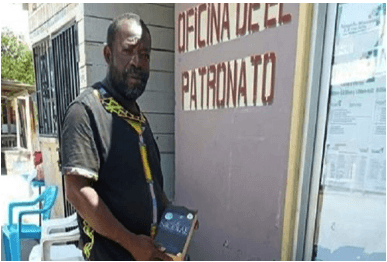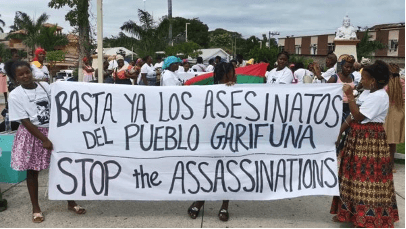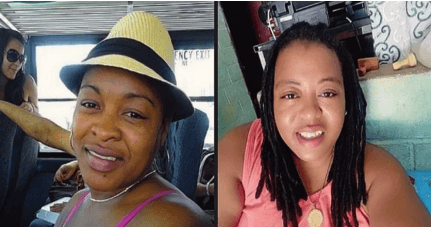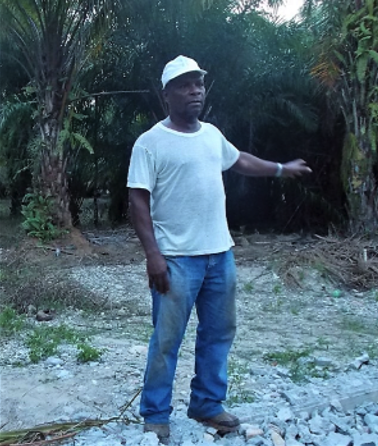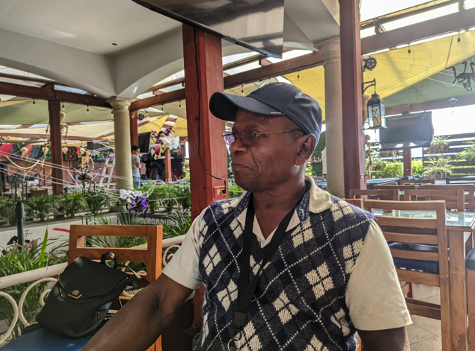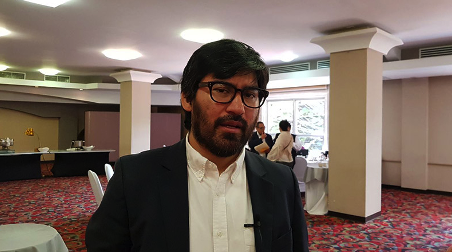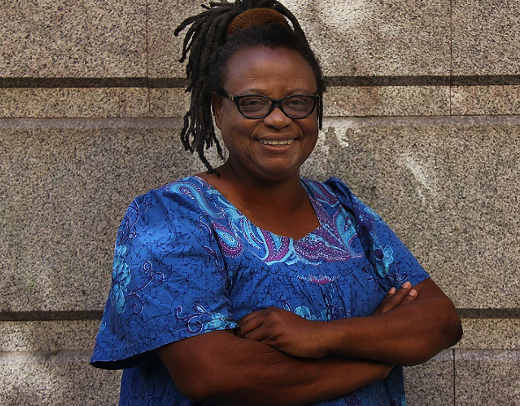Honduras Solidarity Network and Rights Action alert, November 17, 2017
Article reproduced here by kind permission of Grahame Russell of Rights Action and Karen Spring of the Honduras Solidarity Network.
Original posting by Rights Action at:
https://us9.campaign-archive.com/?u=ea011209a243050dfb66dff59&id=b5492c424f
A member of the ‘Canadian tourism mafia’ along Honduras’ north coast, that includes Patrick Forseth and Randy “the porn king” Jorgensen, filed trumped-up charges against indigenous Garifuna leader Miriam Miranda and three other women, in Honduras’ corrupted legal system.
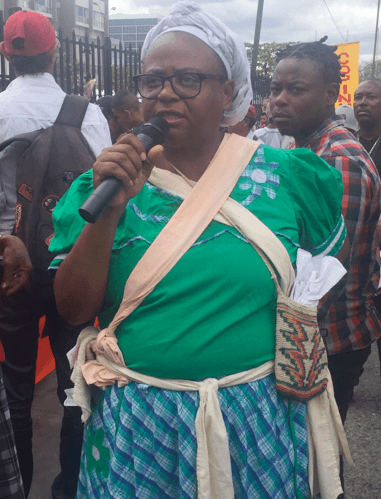
(Miriam Miranda, General Coordinator of OFRANEH demanding justice at a large protest outside of the Honduran Supreme Court in Tegucigalpa on the one-year anniversary of the assassination of Lenca indigenous activist, Berta Caceres of COPINH. Photo: Karen Spring)
The four must go to court, November 24, to respond to these “charges”. They potentially face up to 2-3 years in jail, and now must spend time and resources (of the few they have) to defend themselves from these manipulative charges.
Canadian tourism investor Patrick Forseth, of the CARIVIDA Villas company, has falsely accused Miriam Miranda, the General Coordinator of the Black Fraternal Organization of Honduras (OFRANEH), and three other Garifuna women – Medeline David, Neny Heidy Avila, and Letty Bernardez – of slander and defamation.
Miriam Miranda is a leading Honduran Garífuna activist who has faced numerous threats and direct acts of repression for her courageous, articulate long-time work with OFRANEH and other Honduran groups and movements.
The reasons behind the malicious charges against these four Garífuna women are quite simple. Forseth and CARIVIDA are involved in a major land dispute with the indigenous Garifuna community of Guadalupe in Trujillo Bay, located on the Caribbean coast of Honduras. Forseth has used several very questionable legal maneuvers in the now (since the 2009 military coup) deeply corrupted Honduran legal system, to criminalize any indigenous Garífuna people involved in land, territory and human rights defence work, in order to further claims that CARIVIDA’s illegal land purchase in Guadalupe was valid.
One of the local woman being charged, Medeline David already faces charges of illegal possession of land as a result of her participation in a community-led land reclamation project to recuperate their own land – land in dispute with CARIVIDA.
Geovanny Bernardez, another OFRANEH leader and other Guadalupe community activists including leader, Celso Guillen, also face charges laid by the Honduran state and CARIVIDA as a result of the same land dispute.
The legal case against Miranda and the 3 women was presented on May 26, 2017 and the first court hearing is scheduled for November 24, 2017. If found guilty, Miriam, Medeline, Neny, and Letty could face up to 2-3 years in prison.
This defamation accusation is a clear example of how wealthy North Americans use and take advantage of the impunity and corruption in Honduras’ post 2009 military coup political and legal systems to criminalize people that resist their economic interests and projects.
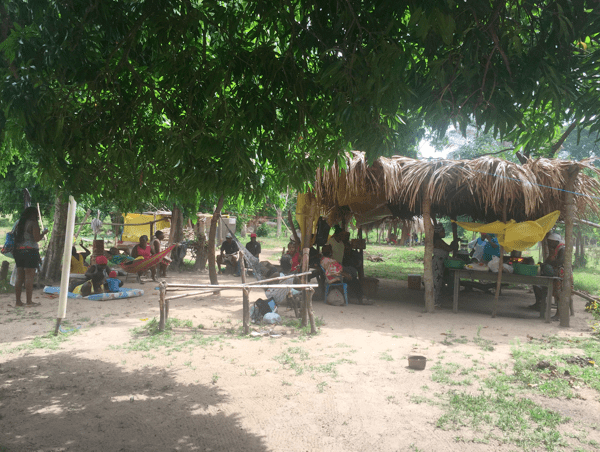
The land defence project in the Garífuna community of Guadalupe in Trujillo Bay. The area where many community members are camping out is the land that is claimed to be owned by Patrick Forseth. Forseth plans to build a resort and villa project on the land. (Photo Karen Spring)
As the General Coordinator of OFRANEH, Miranda is being directly targeted in an attempt to silence the resistance of Garifuna communities not only in Trujillo Bay, but in other land disputes across the coast of Honduras.
Forseth is the husband of the stepdaughter of Canadian businessman, Randy Jorgensen (“the Porn King”) who owns and operates several gated community projects in the same Trujillo Bay region. Some of Jorgensen’s tourist projects are adjacent to the land that Forseth claims he owns and “legally purchased.”
Forseth, Jorgensen and other North Americans continue to take control of lands that are inside ancestral indigenous Garífuna titles, some of which date as far back as the 1860s. Jorgensen is facing charges of illegal possession of land for his project Campa Vista owned by his company, Life Vision Development.
Karen Spring, Honduras Solidarity Network, spring.kj@gmail.com
Grahame Russell, Rights Action, info@rightsaction.org
*******
Background
OFRANEH members denounced for defamation by Canadian tourism investors Patrick Daniel Forseth (Carivida Villas) and Randy Jorgensen (Life Vision Developments)
http://mailchi.mp/rightsaction/ofraneh-denounced-for-defamation-by-forseth-and-jorgensen
Lands To Die For: The Garifuna Struggle In Honduras
December 20, 2016, CCTV Americas
35 minute film about violent and corrupt challenges facing the Garífuna people, lead by the OFRANEH organisation, in the context of the violence and repression, impunity and corruption that characterise the Honduran military, economic and political elites and their international partners.
http://www.cctv-america.com/2016/12/20/lands-to-die-for-the-garifuna-struggle-in-honduras
Miriam Miranda, OFRANEH leader, detained and threatened by Honduran police
On January 11, 2017, Miriam Miranda and three other members of OFRANEH (Fraternal Organisation of Black and Garífuna Peoples) – Luís Gutiérrez, Oscar Gaboa, Luís Miranda – were illegally detained and threatened by police at a roadside stop in La Ceiba, along Honduras’ north coast.
http://us9.campaign-archive1.com/?u=ea011209a243050dfb66dff59&id=6d6627ffdb
The Canadian porn king and the Caribbean paradise: Is a businessman taking advantage of lawlessness to scoop up land?
November 20, 2016, by Marina Jimenez
https://www.thestar.com/news/world/2016/11/20/the-canadian-porn-king-and-the-caribbean-paradise.html
The U.S. and Canada Have Blood on Their Hands in Honduras
October 22, 2016, by Grahame Russell
http://www.telesurtv.net/english/opinion/The-US-and-Canada-Have-Blood-on-Their-Hands-in-Honduras-20161022-0010.html
*******
Names/Addresses
Carivida Villas
www.carivida.com
info@carivida.com
(778) 242-8678
Carivida Club Café
Trujillo, Colón, Honduras
Life Vision Properties
http://lifevisionproperties.com/
90 Admiral Blvd. Mississauga, ON, Canada, L5T 2W1
1 (416) 900-6098
Ambassador Michael Gort, Embassy of Canada in Costa Rica, Honduras and Nicaragua, Tel: (504) 2232-4551; Michael.gort@international.gc.ca; tglpa@international.gc.ca
*******
More information
OFRANEH (Organización Fraternal Negra Hondureña)
garifuna@ofraneh.org, www.ofraneh.org, http://www.ofraneh.wordpress.com
|
|
|
